Content of micronutrients, mineral and trace elements in some Mediterranean spontaneous edible herbs
- PMID: 26473007
- PMCID: PMC4605969
- DOI: 10.1186/s13065-015-0137-9
Content of micronutrients, mineral and trace elements in some Mediterranean spontaneous edible herbs
Abstract
Background: The analysis of mineral elements composition was determined in three wild edible herbs (Cichorium intybus L., Sonchus asper L. and Borago officinalis) collected in seven different sampling sites which were characterized by different pollution grade. The detection of mineral elements (Ca, K, Mg and Na), micronutrients (Cu, Fe, Li, Mn and Zn) and heavy metals (As, Cd, Hg, Ni and Pb) was performed.
Results: The results obtained show that in most cases a direct relationship appeared between the amount of elements and the sampling sites. The highest concentrations of heavy metals were found in samples grown in polluted soils. These evaluations showed that contaminants in plants may reflect the environmental state in which they develop.
Conclusion: The examined species are a good source of mineral elements and micronutrients, making them particularly adapt to integrate a well-balanced diet. The accumulation of heavy metals showed that contaminants in plants may reflect the environmental state in which they develop. Results showed high concentrations of heavy metals in samples taken in locations characterized by high human activity and in some samples from the local market, of which no one knows the collection area.
Keywords: Edible; Food analysis; Heavy metals; Micronutrients; Mineral elements; Pollution; Wild herbs.
Figures
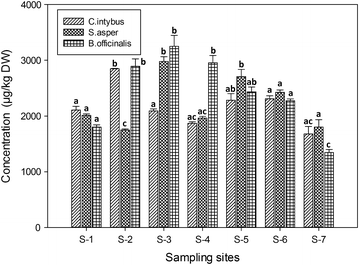
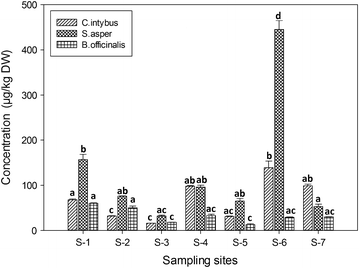
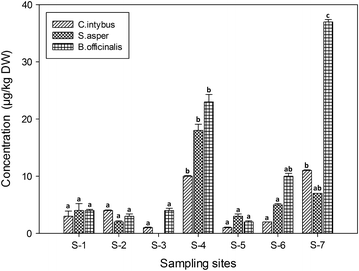
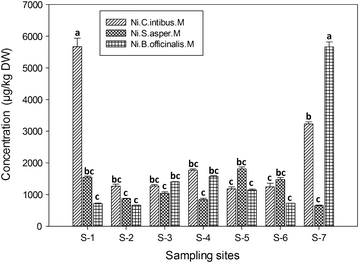
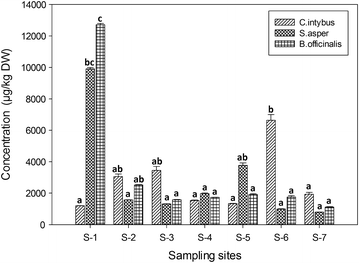
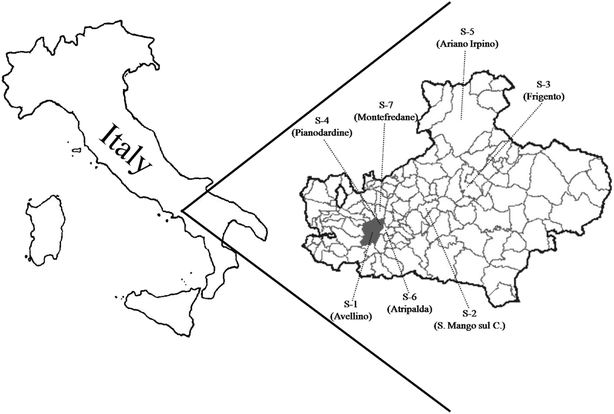
Similar articles
-
Evaluation of Major Minerals and Trace Elements in Wild and Domesticated Edible Herbs Traditionally Used in the Mediterranean Area.Biol Trace Elem Res. 2021 Sep;199(9):3553-3561. doi: 10.1007/s12011-020-02467-3. Epub 2020 Nov 5. Biol Trace Elem Res. 2021. PMID: 33150483 Free PMC article.
-
Multi-elements determination in medical and edible Alpinia oxyphylla and Morinda officinalis and their decoctions by ICP-MS.Chemosphere. 2016 Dec;164:430-435. doi: 10.1016/j.chemosphere.2016.08.122. Epub 2016 Sep 3. Chemosphere. 2016. PMID: 27599009
-
Elemental characterization of wild edible plants from countryside and urban areas.Food Chem. 2015 Jun 15;177:29-36. doi: 10.1016/j.foodchem.2014.12.069. Epub 2014 Dec 26. Food Chem. 2015. PMID: 25660854
-
Trace elements in agroecosystems and impacts on the environment.J Trace Elem Med Biol. 2005;19(2-3):125-40. doi: 10.1016/j.jtemb.2005.02.010. Epub 2005 Oct 24. J Trace Elem Med Biol. 2005. PMID: 16325528 Review.
-
Heavy metal pollution in China: origin, pattern and control.Environ Sci Pollut Res Int. 2003;10(3):192-8. doi: 10.1065/espr2002.11.141.1. Environ Sci Pollut Res Int. 2003. PMID: 12846382 Review.
Cited by
-
Copper boosts the biostimulant activity of a vegetal-derived protein hydrolysate in basil: morpho-physiological and metabolomics insights.Front Plant Sci. 2023 Aug 24;14:1235686. doi: 10.3389/fpls.2023.1235686. eCollection 2023. Front Plant Sci. 2023. PMID: 37692443 Free PMC article.
-
Zinc biofortification of hydroponically grown basil: Stress physiological responses and impact on antioxidant secondary metabolites of genotypic variants.Front Plant Sci. 2022 Oct 27;13:1049004. doi: 10.3389/fpls.2022.1049004. eCollection 2022. Front Plant Sci. 2022. PMID: 36388561 Free PMC article.
-
Comparative Study of Chemical, Biochemical Characteristic and ATR-FTIR Analysis of Seeds, Oil and Flour of the Edible Fedora Cultivar Hemp (Cannabis sativa L.).Molecules. 2018 Dec 27;24(1):83. doi: 10.3390/molecules24010083. Molecules. 2018. PMID: 30591638 Free PMC article.
-
The Uptake, Transfer, and Detoxification of Cadmium in Plants and Its Exogenous Effects.Cells. 2024 May 24;13(11):907. doi: 10.3390/cells13110907. Cells. 2024. PMID: 38891039 Free PMC article. Review.
-
Novel Quantitative Trait Loci for Grain Cadmium Content Identified in Hard White Spring Wheat.Front Plant Sci. 2021 Dec 2;12:756741. doi: 10.3389/fpls.2021.756741. eCollection 2021. Front Plant Sci. 2021. PMID: 34925407 Free PMC article.
References
-
- Medrano A, Masoud TA, Martinez MC. Mineral and proximate composition of borage. J Food Compos Anal. 1992;5:313–318. doi: 10.1016/0889-1575(92)90064-Q. - DOI
-
- Özcan MM, Akbulut M. Estimation of minerals, nitrate and nitrite contents of medicinal and aromatic plants used as spices, condiments and herbal tea. Food Chem. 2008;106:852–858. doi: 10.1016/j.foodchem.2007.06.045. - DOI
LinkOut - more resources
Full Text Sources
Other Literature Sources
Research Materials

